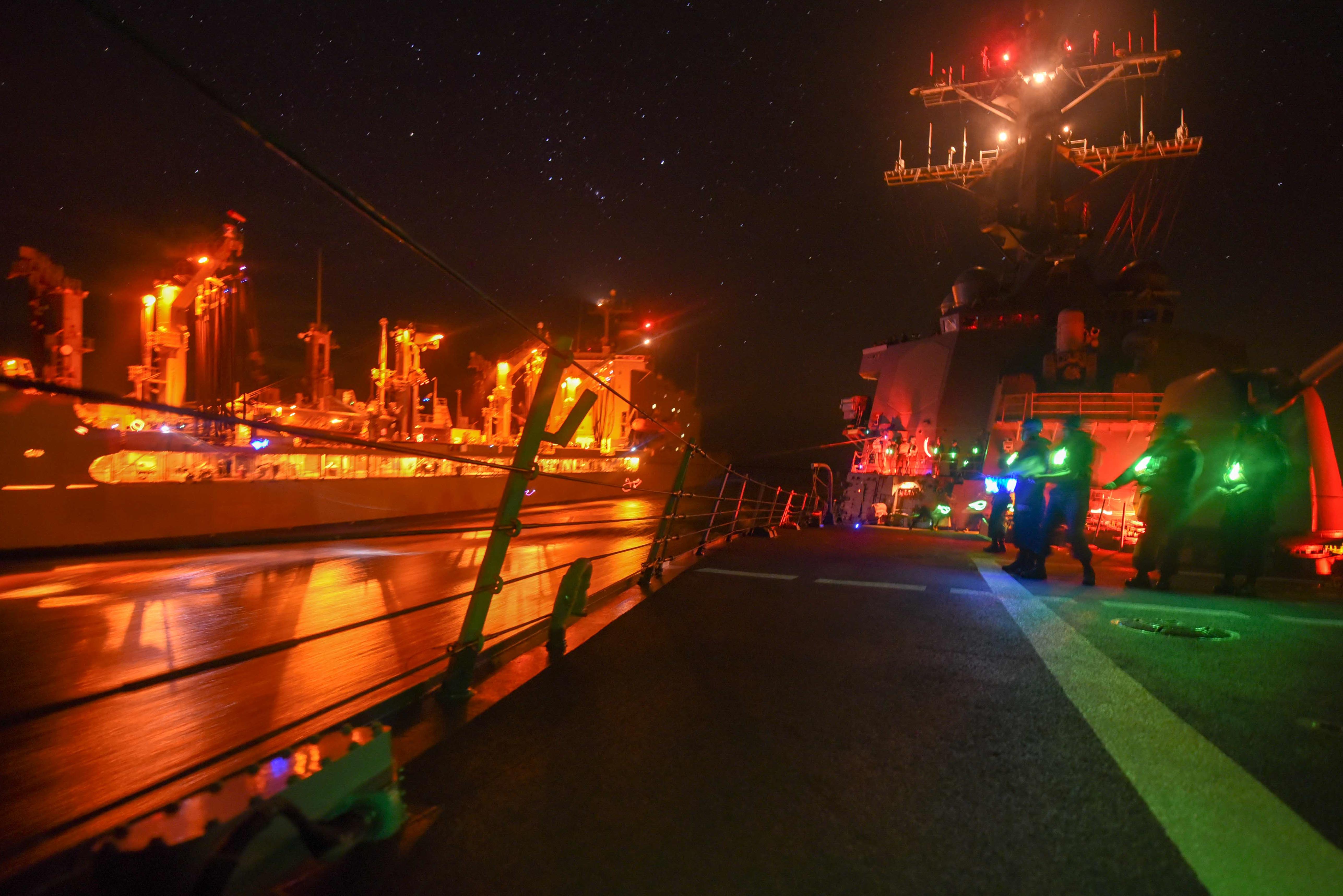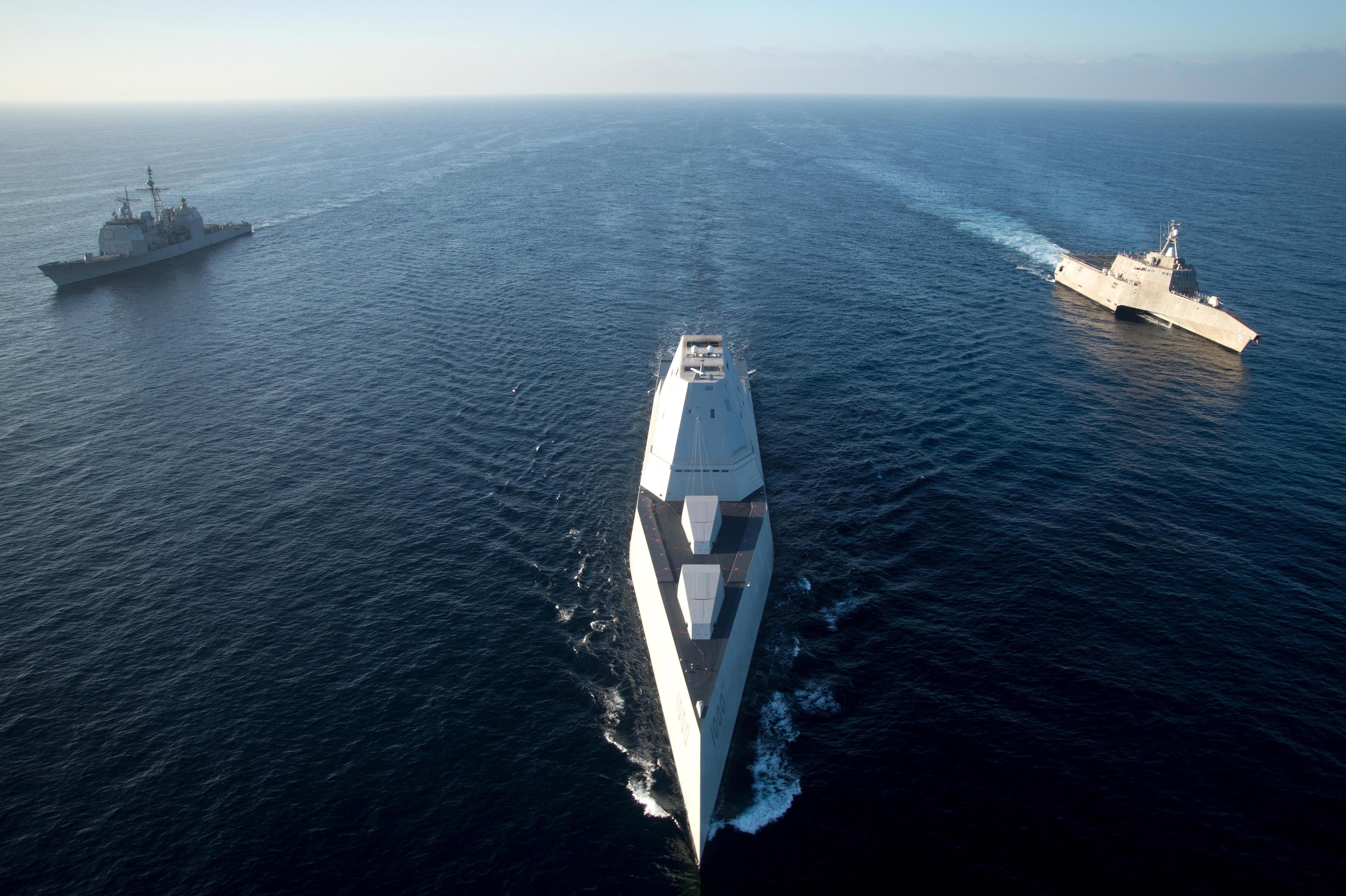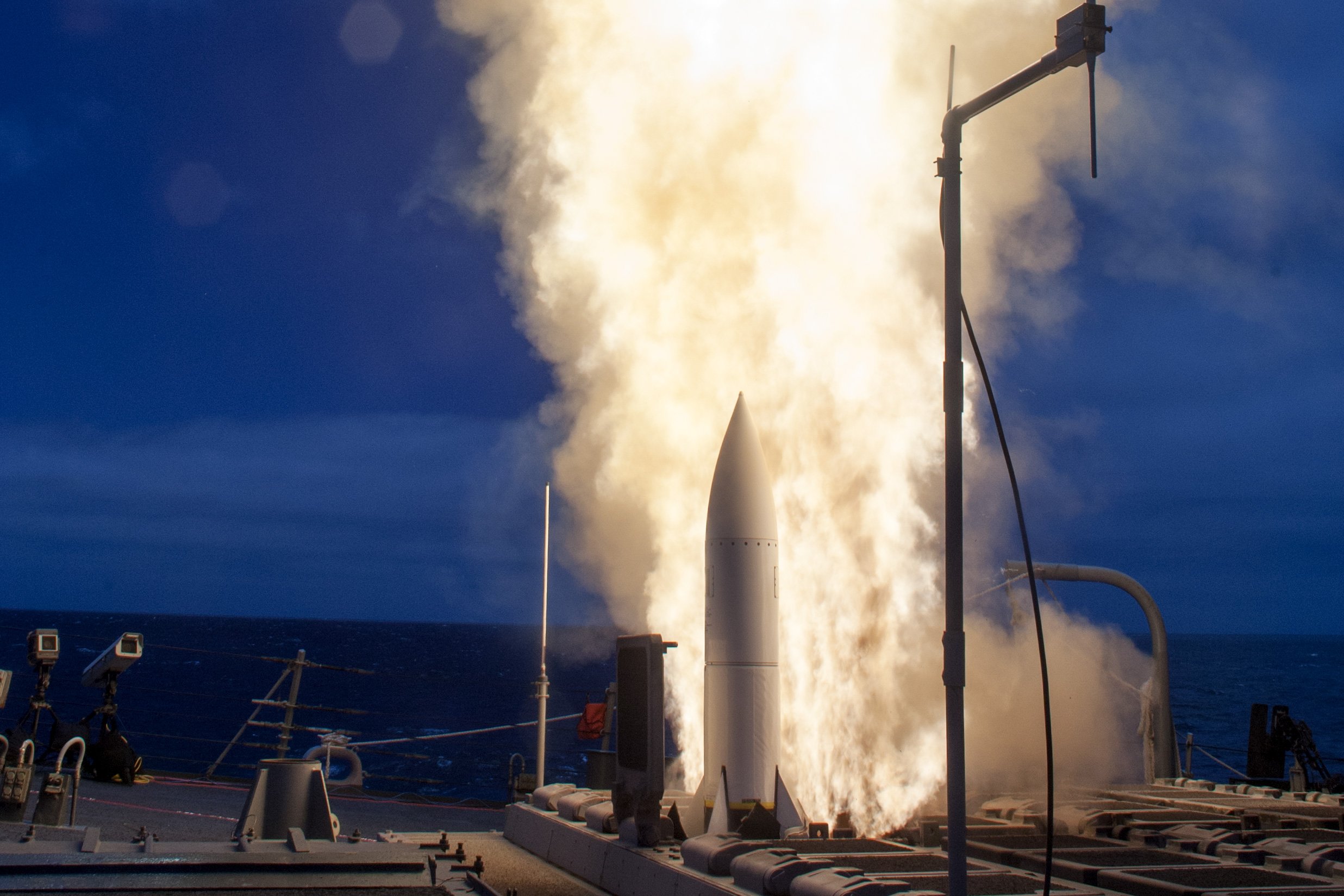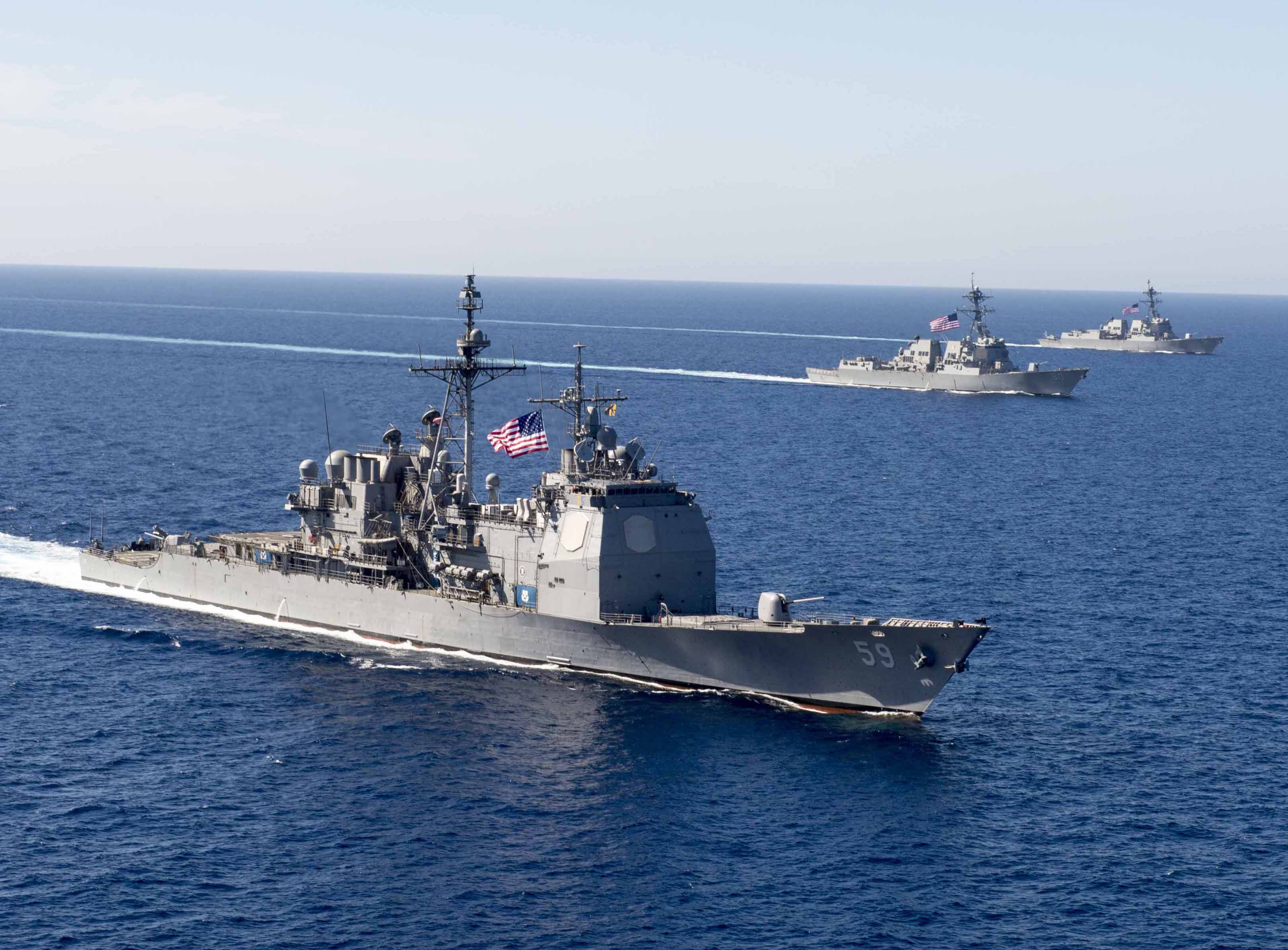
A new strategy for the surface force – released today – creates an outline for a navy that anticipates a return to high-end warfare it hasn’t known since the Cold War.
The document will fill in gaps for several pushes the surface establishment has announced over the last two years to create a cohesive path forward for the force.
“There was a picture that we were building, we just had to get that picture into focus. You want to be impatient, you want it into focus as rapidly as you can, but you may focus on the wrong picture,” Vice Adm. Tom Rowden told USNI News last week.
“This is our North Star, if you will. All the conversations we’ve had over the last three, four years, and starts to focus them in a single direction that will drive resources.”
For Rowden, that direction is sea control.
“Sea control does not mean command of all the seas, all the time. Rather, it is the capability and capacity to impose localized control of the sea when and where it is required to enable other objectives and to hold it as long as necessary to accomplish those objectives,” reads the strategy.
That flavor of sea control was the driving force of the Navy during the Cold War.
“Every time we got underway… we were in this shadowboxing match with the Soviet Navy over control of the sea. The way we operated… was to go toe-to-toe with the Soviet Union and wrest control of the sea,” Rowden said.
“That changed when the Cold War was lost by the Soviet Union and they virtually, in very short period of time, tied up their ships, and we woke one day and we had control of every square inch of ocean on the face of the earth.”

Instead of sea control, the emphasis for the surface navy post-Cold War – starting with the first Gulf War – was on power projection. During the wars in Iraq and Afghanistan, that direction included land attack and ballistic missile defense responsibilities.
High-end and high seas warfare against a near peer competitor were not front and center of the Navy’s consciousness. For example, the last Arleigh Burke guided-missile destroyer to commission with a dedicated over-the-horizon anti-ship missile was USS Porter (DDG-78) in 1999.
“It seems to me that we’ve been focusing on something different. We have to return to thinking about this balance of power projection and sea control,” Rowden said.
But in early 2015, the surface forces announced a reemphasis on the higher-end fight – distributed lethality. The idea was to expand the offensive capability of the surface fleet through modification of existing weapons, changes in tactics and putting more firepower on more ships faster.
To that end, the strategy recommends four paths for investment – increase firepower of surface warships, support the Navy’s long-range shipbuilding plan and modernization strategy, improve battle space awareness, and improve learning in the surface forces.
“Part of my drive is to take a look at the weapons and weapon systems that we have and see what modification we can make to those to maximize their value, and how rapidly can we do it,” Rowden said.
“Prime example, Standard Missile 6, [was] originally designed to be a surface-to-air weapon. We’ve been able to modify that weapon to not only execute effectively as a surface-to-air weapon but also as a surface-to-surface weapon. “
The Navy is also developing a maritime version of the Tomahawk Land Attack Missile and studying whether it could use the Lockheed Martin Long Range Anti-Surface Missile, Kongsberg Naval Strike Missile and a modified Boeing Harpoon to increase anti-surface offensive power.

In the realm of modernization and shipbuilding, the surface forces are evaluating existing platforms for modernization – like the remaining Ticonderoga-class guided-missile cruisers.
“Even though they’re scheduled for decommissioning starting in the early ‘20s timeframe, the fact of the matter is we still have a very capable combat system even on our older cruisers. If the leadership decides that it’s a better idea to keep the force structure up for a modest investment we can continue to the life of those cruisers well into the 20s. That’s an option that we want to put on the table for leadership,” Rowden said.
“We’re doing a bunch of stuff like that. As more resources flow, here are more options, here is more ability to get the force structure up.”
The strategy also calls for the, “continued development of combat systems capabilities with improvements to mission planning software, battle management software for Warfare Commanders, and tools to manage unit and force level emissions. The efforts in this overarching objective are also intended to capitalize on advanced Electromagnetic Maneuver Warfare (EMW) technologies, such as the Surface Electronic Warfare Improvement Program.”

While equipment has been the focal point of the distributed lethality effort, the strategy also includes pushes in improving and honing personnel and tactics.
A major part of that effort is overseen by the Naval Surface and Mine Warfighting Development Center (NSMWDC, pronounced: Smi-Dik).
“People like to focus on the flash to bang, but I’m also pleased in where we are in the supporting organizations necessary to move these thoughts and ideas on the tools forward as well,” Rowden said.
The new command that creates specialized surface warfare officers in the realms of mine, anti-submarine, amphibious and surface warfare is set to be the intellectual heart of the surface renaissance. Complex requirements and tactics problems that were difficult to staff are now given to SMWDC, Rowden said.
“Controlling the sea isn’t about surface ships and surface weapons, controlling the sea is about utilization of all of the different types of arrows in the quiver,” Rowden said.





